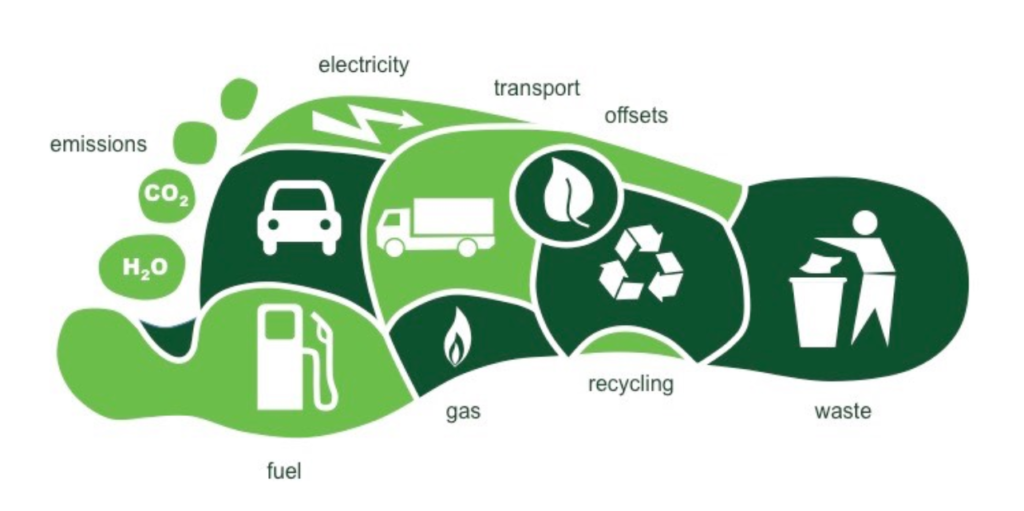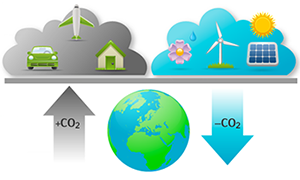You should have noticed that many countries already started talking about carbon neutrality. Europe already made an announcement that they want to achieve carbon neutrality in the year 2050. Whereby the China government also announced achieving carbon neutrality in the year 2060.
Many should have said that there are at least 30 years from now, but time is running short. Unless we are having some basic fundamentals from several aspects, else we are unable to fulfill the goal.
Carbon neutrality is to ensure neutral impact on environment.
What is Carbon Neutrality

The carbon over here stands for carbon dioxide discharge from human activity into the environment. In our daily life, we are creating carbon dioxide via our breathing, activity, manufacturing, etc. The carbon discharge indicates the footprint of human activities on the environment.
In order to maintain a sustainable living environment for our next generation, many countries have pledged to achieve neutrality in the year 2050 or 2060. The carbon-neutral means the amount of carbon discharge from the human is equal to the amount of carbon absorbed.
The first step to achieve carbon neutrality is reducing the carbon footprint.
Let me show you some figure why achieving carbon neutral is not a simple assignment even though the strategy could be simple, plant more trees.
The Carbon Amount
Many say the absorb of carbon dioxide is simple, can be achieved by the photosynthetic of a tree. The leaf needs carbon dioxide in order to carry out the photosynthetic process, hence the tree has become the hope to absorb the human discharged carbon dioxide. Let see what is the figure says.
The Carbon Discharge & Absorb
This is the figure from the USA government. An adult is generating 270kg of carbon dioxide every year. Whereby, a 10 years-old woody plant only able to absorb 22kg of carbon dioxide per year. This means an adult needs 12 woody-trees in order to offset his carbon discharges every year.
By the way, do you think the tree itself is creating carbon dioxide? For instance, a fallen leaf is rotten, and this process also consumes oxygen and discharges carbon dioxide into the environment. So by simply planting more trees may not be sufficient to achieve carbon neutrality.
Technology Application
By understanding the human carbon footprint and the carbon discharges figure, we could conclude that planting trees or back to nature kind of lifestyle may not be sufficient to achieve carbon neutral. In short, we need technology improvement to help us in reducing carbon discharge.
Reduce CO2 Discharge
Among these 3 petroleum products, coal, gasoline, and natural gas, coal is charging the most CO2 among the 3. And natural gas is less CO2 discharge. Under this circumstance, reducing the coal application is the goal. Even though coal is still the highest energy source consumed every year but the trend is reduced since the year 2013. However, the world is consuming 8.5million tons of coal per year and this converts to 30billion tons of CO2. It is really a huge figure.
We are seeing more and more choices of renewable energy are introduced into the overall energy supply industry.
Improve CO2 Absorbtion
The leaf absorbs CO2 by the photosynthesis process but the absorption rate is low. Furthermore, not every place we can plant trees. So engineer is identifying an efficient way to collect the CO2 discharge. One of the technology is collecting the CO2 at the discharge area and converted to carbonate mineral via a chemical process. Under this technology, the CO2 is contained and not discharged to the environment. This also fulfills the greenhouse effect too.
We believe with the worldwide effort, more technology is yet to improve and reduce the CO2 discharge into the environment. From current technology and energy consumption, achieving carbon neutrality still, be a great challenge.




One Reply to “The Carbon Neutrality”